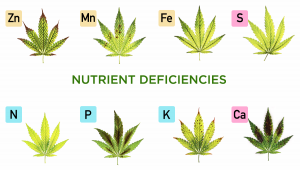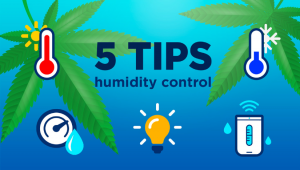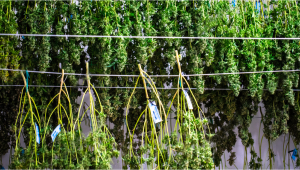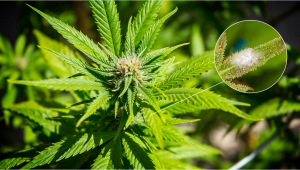
The Main Causes Of Bud Rot When Growing Cannabis
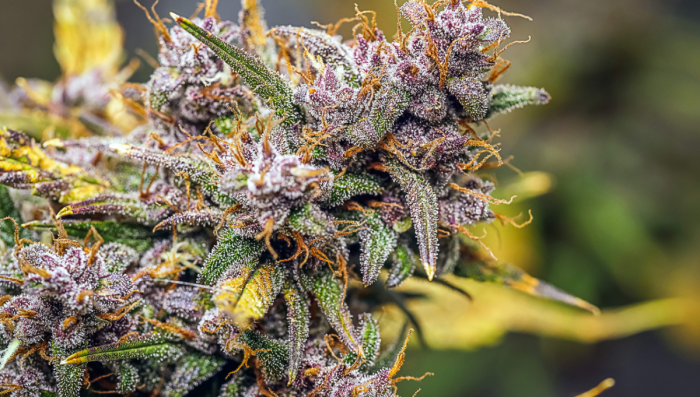
- 1. What is bud rot?
- 2. What does bud rot look like?
- 3. What causes bud rot?
- 4. How to prevent bud rot when growing
- 5. How to prevent bud rot when drying
- 6. How to stop bud rot indoors
- 7. How to stop bud rot outdoors
- 8. In conclusion
There are three types of mold that can affect your cannabis seeds: bud rot, root rot, and powdery mildew. Although all of them are types of fungus, bud rot can be considerably more harmful to your harvest than powdery mildew because it attacks directly our precious flowers, turning them black, leaving them smelly, and not suitable for consumption.
Many growers, especially beginners, are mostly concerned about pests such as insects when it comes to protecting their cannabis plants. However, microscopic pathogens are arguably, and ironically, a much bigger threat. Although you can’t see them, cannabis plants are in constant interaction with microbes throughout the entire growing cycle. These small critters occur everywhere on the plant, from the roots to the leaves to inside the tissues. Many of these creatures are highly beneficial for cannabis, whereas others, if they gain a foothold, quickly inflict disease. Below, we’re going to teach you about those that cause bud rot and how to combat this damaging disease.
1. What Is Bud Rot?
Bud rot is a type of mold that develops inside cannabis buds. The stems on the inside of the buds start with an infection that spreads to the outside, making it extremely hard to detect in the early stages. After it has infected the inside of the buds, the rot starts spreading in all directions, producing spores that can spread to the other plants in our grow space or any other plants nearby so it’s essential that you remove infected plants from your grow space as soon as possible!
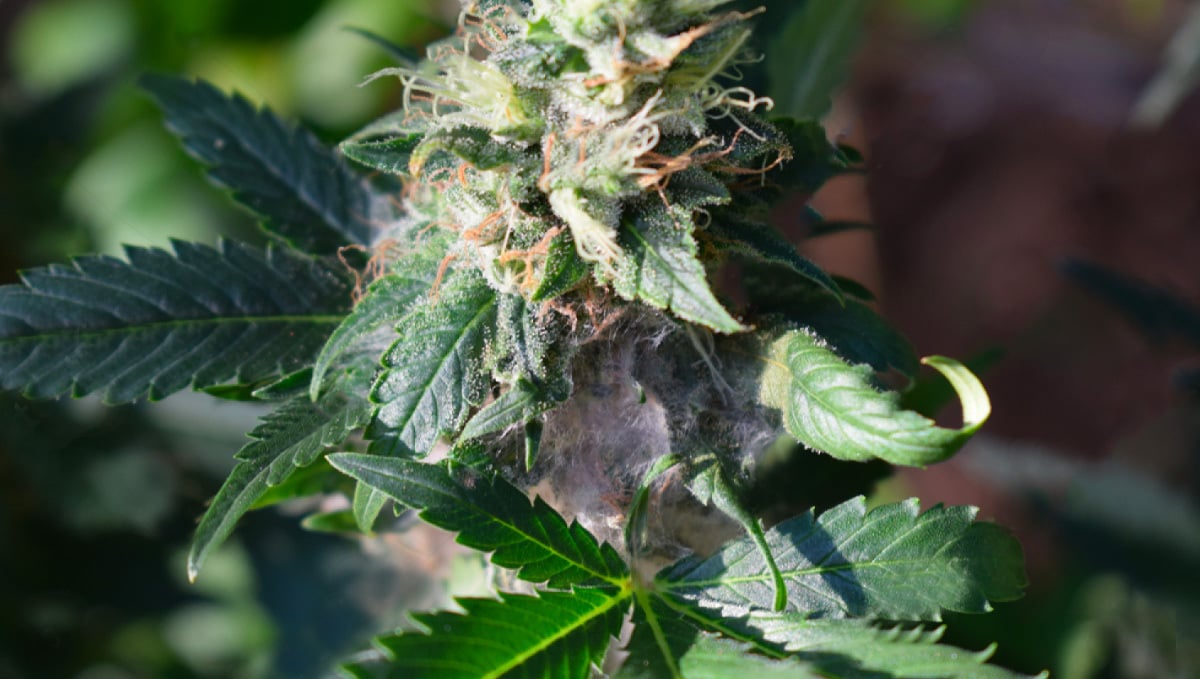
Most cases of bud rot are due to a pathogen known as Botrytis cinerea. This necrotrophic fungus also affects many other agricultural crops, including roses, beans, and tomatoes. The disease also affects many areas of plant tissue, including leaves, buds, stems, flowers, petals, and fruit. When it comes to cannabis, the disease can affect either a portion of the flower or the entire thing. There are various signs that Botrytis has started to take over a cannabis bud, including yellowing and the death of bract leaf tissue. Find out exactly what this disease looks like below.
2. What Does Bud Rot Look Like?
It’s really hard to detect bud rot in the early stages because the fungus starts infecting your plant from the inside out. In the early stages, bud rot affects the stems inside the buds which is hard to see from the outside but they will start to look gray and gooey. As the rot starts to further infect the buds, you will see the leaves starting to yellow and wilt, and the buds starting to develop a gray web on top or white dust (it’s the spores) on top of them.
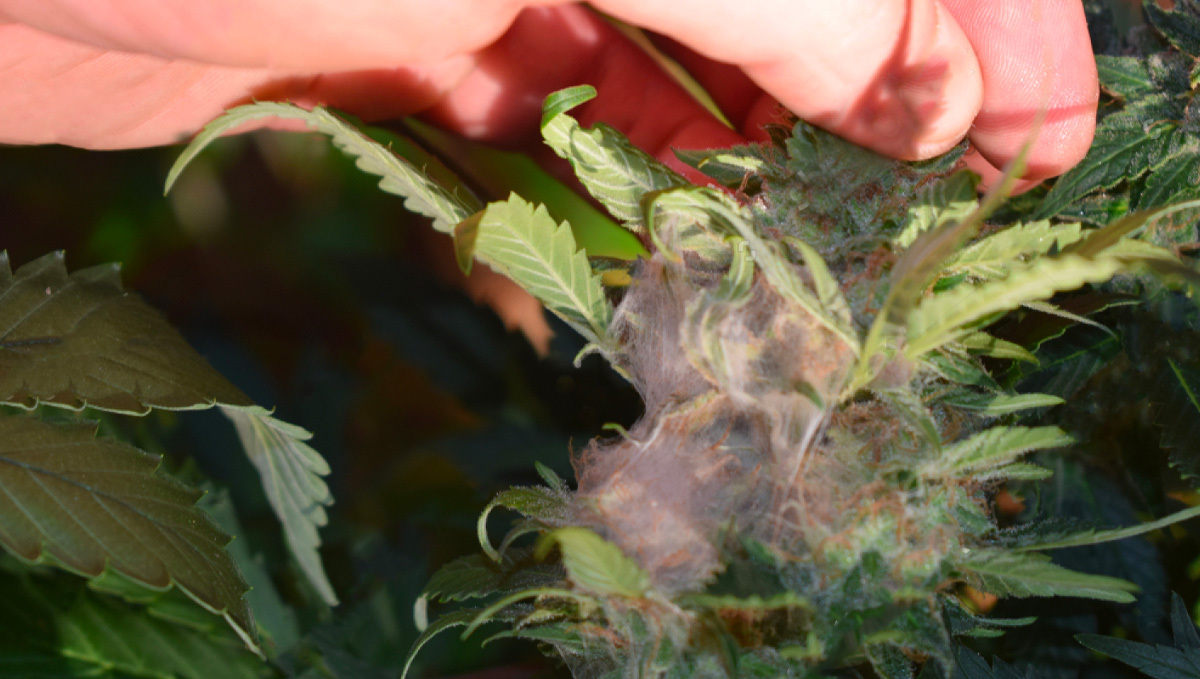
If you already have the dust and webbing, your buds are no longer able to be saved and your whole plant is probably infected also. These white spores are what infect the healthy parts of the plant and can be transferred from plant to plant by water, wind, and on your own clothes. If you suspect your plants are infected with this type of mold, the best way to be sure is to look between the spaces in the buds and try to decide if something is wrong.
Bud rot...starts from the inside out. So by the time you can see it on the exterior the mold has taken a strong hold. Only in the very beginning, it looks like typical mold. White wispy fluffy.... But that only occurs on the interior of your bud formations. Hard to catch at that point as it's just starting out. The best first indicator is random dead leaves within your flowers, that seem very out of place. -4F1M6
If the inside of the bud is brown and mushy, you should isolate that plant and prepare to remove the part of the bud that is affected. If most of the bud is compromised, the best thing to do is to throw the whole plant out and look for signs of infection in the rest of your plants, as bud rot spreads easily and can completely compromise your harvest.
3. What Causes Bud Rot?
Mold spores are almost everywhere but they will only affect your plants in certain conditions, such as:
- High humidity;
- Stagnant air;
- And High temperatures.
This means that you should always pay attention to your growing conditions because, if the humidity level is above 60%, then it’s possible for your plants to get bud rot. Now, this doesn’t mean that your plants definitely will get bud rot, many growers cultivate in humidities higher than 60% but don’t get bud rot… but why?
Well, as mentioned, airflow plays a big part. If the air in your grow space is humid and stagnant (meaning that there’s no air exchange or airflow), then there’s a higher risk of getting bud rot. It’s essential that you provide proper air circulation and air exchange below, above, and through the plants in order to prevent bud rot; Doing this may seem hard but it’s not, a simple oscillating fan moves air very well and will most likely prevent bud rot but there’s still one more crucial element: temperature.
Main Causes Of Bud Rot
| Problem | Solution |
|---|---|
| Poor ventilation | Increase fan speed |
| High temperatures | Increase exhaust fan speed or use AC |
| High humidity | Adjust dehumidifier or increase exhaust fan speed |
Mold thrives in temperatures above 24°C so the temperature is as important as the other two elements mentioned before so you need to check and adjust the growing conditions in order to avoid problems further into your grow cycle because, if you fail to do so, the right combination of temperature, humidity and lack of airflow can make the perfect environment for bud rot to destroy your precious plants.
4. How To Prevent Bud Rot When Growing
The best way to prevent bud rot is a combination of good growing conditions and the right maintenance of your plants. Bud rot thrives in growing rooms with high humidity, poor ventilation, and slightly warmer temperatures and can be easier to get if your plant is bushy, have very dense buds, or has weak genetics.
We can say bud rot prevention starts by selecting the best genetics for your grow space. Always look for highly resilient plants and if you cannot offer them optimal growing conditions, opt for growing Sativa-dominant plants. We recommend our new Orange Sherbet Auto, this Sativa-dominant will grow tall and wispy, very good for when you have problems with humidity.

Indicas are full of thick wide leaves and really fat buds, making it easier for bud rot to thrive. On the other hand, Sativas tend to grow less dense buds and grow taller and wispy, making it less probable to get bud rot. If you prefer Indicas, you have to know that they usually grow more compact and produce way more leaves than Sativas. Know this in advance so you can prepare to perform light defoliation of plant training techniques to avoid marijuana bud rot.
Another factor that can influence the appearance of this fungus is failure to control the humidity level. As you may know, fungus thrives in the wet. A combination of a warmer temperature along with the lack of proper ventilation may cause water to not evaporate completely and increase the humidity levels.
This is one of the main causes of bud rot, so always check your growing conditions and adjust accordingly. Be sure to have the right amount of fans and an exhaust proper for the size of your grow room to have good air exchange and have a hygro thermometer to check on the humidity levels and temperature inside your grow room.
Removing the affected parts is your best option to stopping the spread, but you will have to be vigilant for any more rot developing from spores already dropped. Keeping your plant dry is the only way to prevent mold, so getting them wet during the day and drying them at night is not going to work. Look for sudden and random dead leaves in amongst the buds as often this is the first sign that mold is developing within the bud. -ORGANOMAN
If you grow outdoors, there’s not much you can do other than choose the right place for your plants. Place them somewhere where they get a good amount of light and wind, and be sure to protect them from heavy rain so they don’t get wet for a long period of time. Don’t let your plant grow in poor conditions, as this can result in a number of problems, not only bud rot. Growing in a greenhouse or polytunnel can help to protect against relentless rainfall during the growing season. However, although these environments protect against detrimental weather, they have the potential of becoming humid, which can also boost the chances of a Botrytis infection.
To keep humidity down when growing under cover, you should periodically open the windows or flaps on your greenhouse or polytunnel (if they have them installed). Alternately, growers that take their hobby particularly seriously install fans in their growing spaces to keep fresh air circulation and humidity levels low.
If you lack the luxury of a greenhouse, there are other steps you can take to minimize the chances of a Botrytis infection. Whenever you’re expecting a period of intense rain, consider erecting a temporary tarp over your plants to keep them safe from getting soaked. You should also consider where you place your plants in your garden. A south-facing position will expose them to the most sun possible, meaning your buds will dry out thoroughly during spells of good weather. Avoid growing close to bodies of water, such as ponds, to keep your plants away from microclimates with high humidity.
5. How To Prevent Bud Rot When Drying
Even if you took all the care necessary to prevent it, weed bud rot can appear after harvesting. Bud rot can also happen while drying and curing, that’s why it’s necessary to check the temperature and most importantly, the humidity levels. The best way to avoid bud rot is to have an appropriate environment in your drying room, it is recommended to have a relative humidity of 60% and a temperature of around 15-25°C.
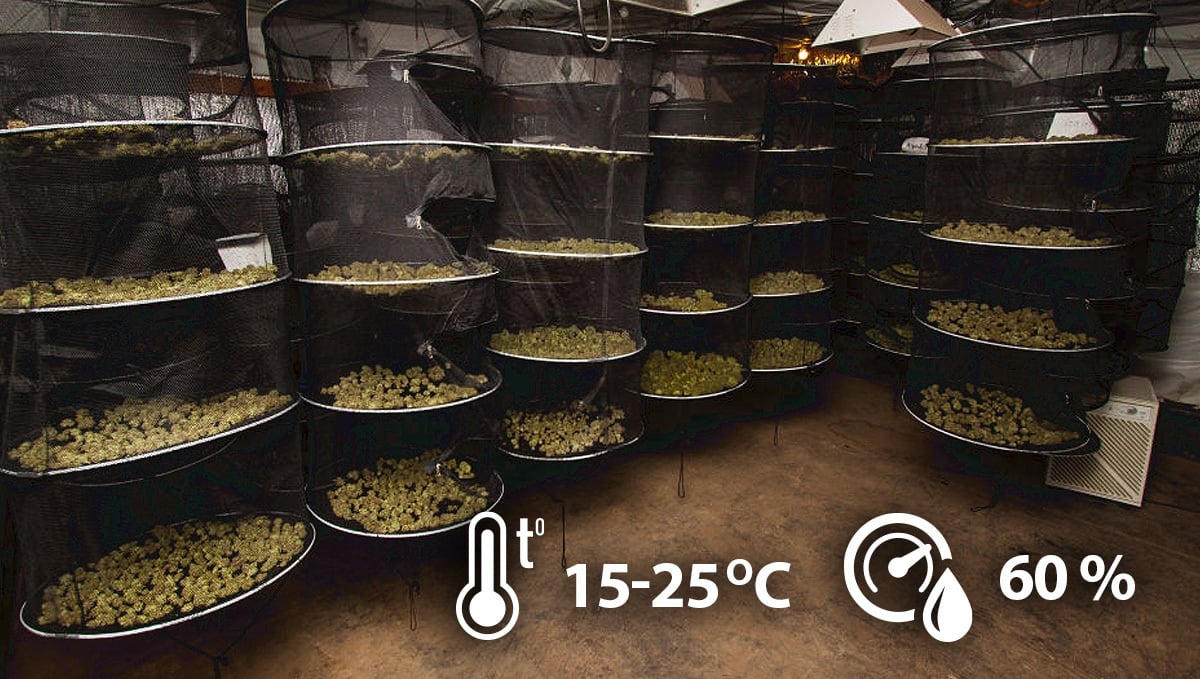
If you are having problems controlling the humidity in your drying room, opt for wet trimming instead of dry trimming. By wet trimming, you’re removing the excess plant material that contains water and will allow for better airflow and lower the humidity in the drying room. Another good way to increase airflow is to leave a good space between the branches or even place small fans to have really modest air circulation in the drying room.
To prevent your buds from molding while drying (or curing), always check your buds before hanging them to dry and never harvest after your plants have been watered ( for indoors) or after a rainy day (for outdoors). First, allow them to dry a little bit for a couple of days.
If you followed every single tip and could not avoid bud rot, you can also speed up the drying process. By providing more airflow you can dry your buds in considerably less time than 2 or 3 weeks.
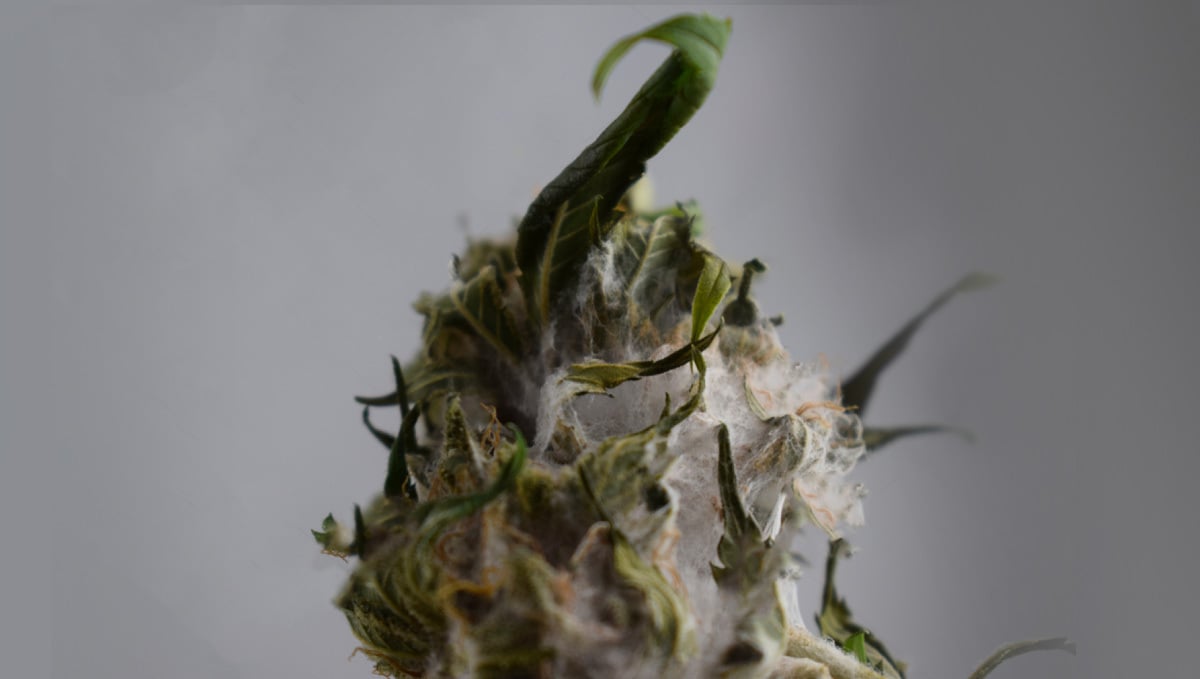
Have in mind that this will drastically change the smell and flavor of your buds, leaving them smelling like dry hay. This is not recommended unless you need to take extreme measures to save your crop from bud rot.
6. How to Stop Bud Rot Indoors
Now that you’ve learned how to prevent bud rot, let’s take a look at how to stop bud rot indoors and outdoors. The first step would be to apply an organic fungicide by following the manufacturer’s recommendations, then continue using it as a preventative measure once a week. Remember that mold thrives in excess moisture so keep your waterings on a strict schedule to help keep humidity levels relatively low and also make sure to adjust the temperatures to around 20°C whenever possible.
If you see any signs of bud rot, you should remove all the infected plants from the grow room as soon as possible and every area with signs of mold should be removed to allow the plant to recover. Remember to never allow moldy plants to come in contact with healthy plants, so it’s recommended to keep infected plants in “quarantine”, in a dry, cool place with good airflow until they recover and can be moved back to the grow tent.
7. How to Stop Bud Rot Outdoors
Stopping bud rot outdoors is basically the same as indoors, but there are some minor differences. First of all, start by using a fungicide (preferably organic) until the infestation is under control, and continue spraying once a week as a preventative measure. As you may know, when growing outdoors you’re at mercy of nature and weather can cause bud rot, so it’s highly recommended to build an improvised structure (similar to a greenhouse) to protect your plants from rain, especially if they are already infected.
If you identify bud rot on any of your plants outdoors, remember to remove the areas with bud rot and dispose of them in a sealed bag to avoid the spores from spreading. Also, make sure to keep the infected plants away from healthy plants, in a dry, cool place with enough breeze, and do not bring them back to the original area to ensure your plants stay healthy until harvest.
8. In Conclusion
Cannabis bud rot can be a very nasty problem to deal with. It does not only spread to all your plants in the same room but also makes your buds turn gray and unsmokable. We recommend always having the best environment you can provide your plants to avoid problems. If you’re tired of your plants getting mold, we recommend further adjusting your growing environment and trying with a more resilient strain, like our Gorilla Cookies Auto.
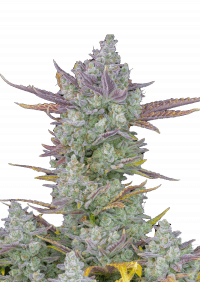
This plant is extremely resilient and will give you an advantage over all pests and diseases, including bud rot. Just remember that being resilient doesn’t mean that mold cannot affect it, it means that it will give you more time to identify and treat it if necessary!







